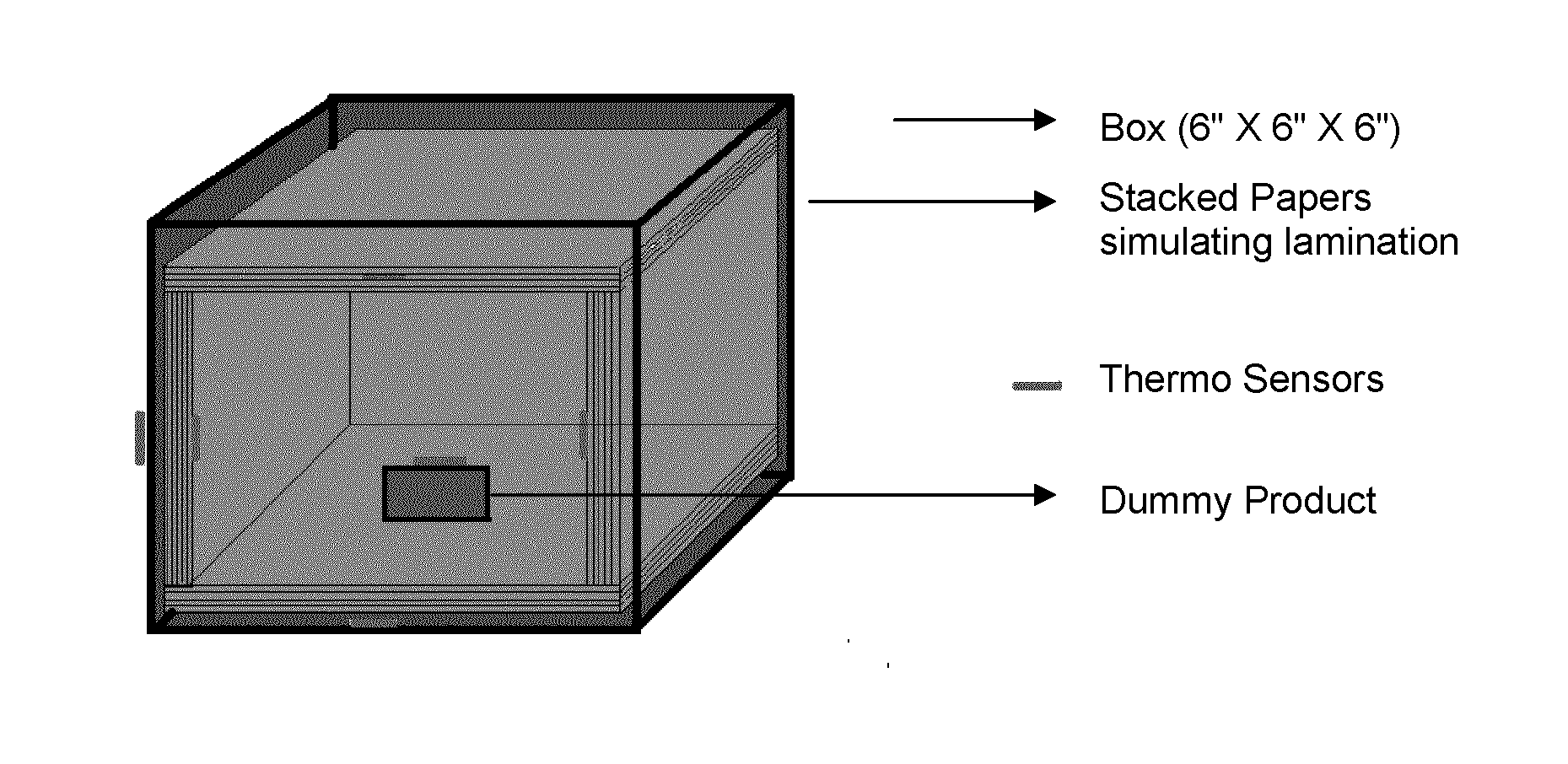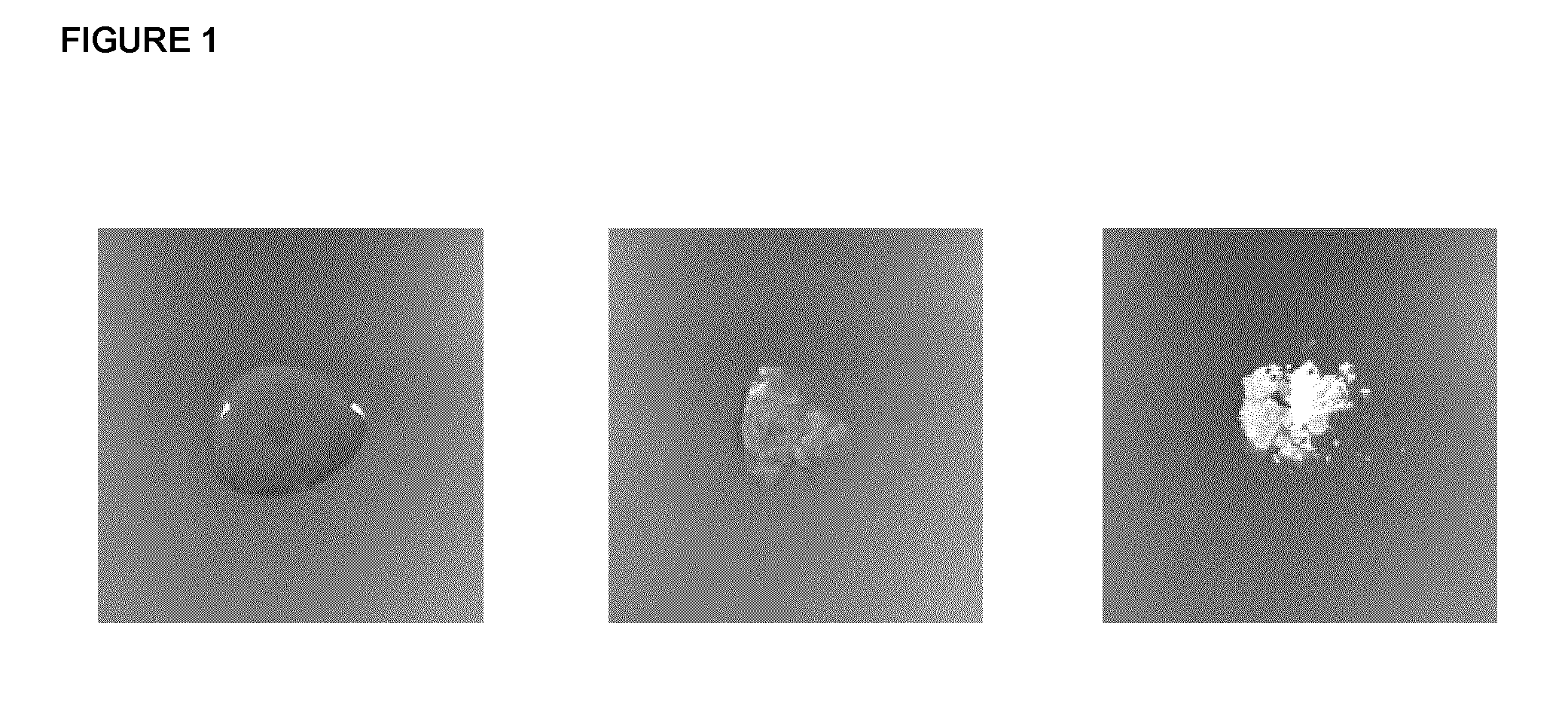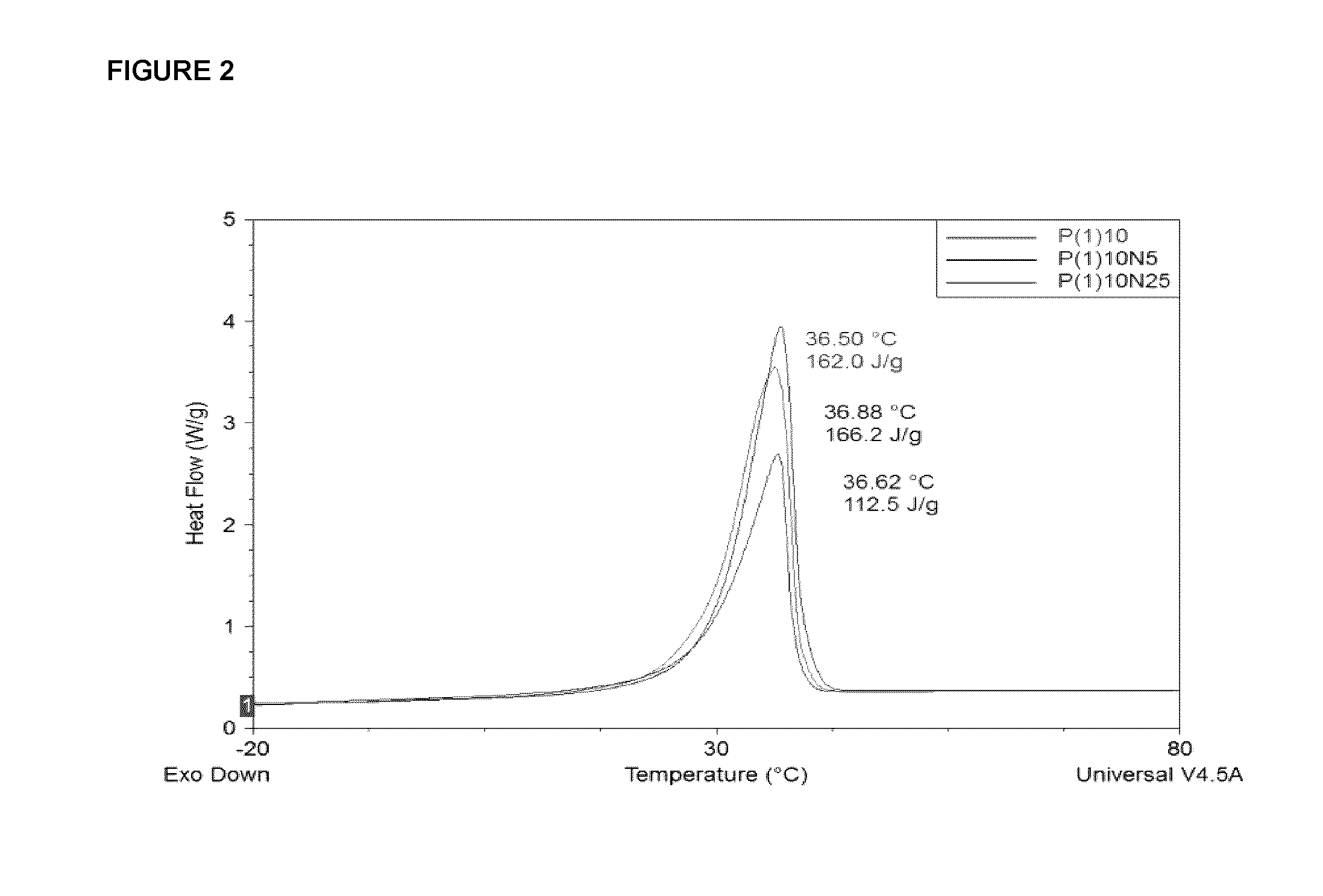Nanostructured phase change materials for solid state thermal management
a phase change material and phase change technology, applied in the field of nanostructured phase change materials, can solve the problems of reducing the heat capacity of known pcms, reducing the proportion of pure pcm in the formulation, and unsuitable for application on articles such as textiles or packaging materials without encapsulation
- Summary
- Abstract
- Description
- Claims
- Application Information
AI Technical Summary
Benefits of technology
Problems solved by technology
Method used
Image
Examples
example 1
Effect of Cellulose-Based Polymers on Heat Capacity of Nanocomposite PCMs
[0235]Although hydroxypropyl cellulose (HPC), microcrystalline cellulose (MCC) and nanocrystalline cellulose (NCC) are in the same family of cellulose-based polymers, they differ significantly from each other. In HPC, the hydroxyl groups of cellulose are replaced with hydroxypropylated groups. Due to this esterification, HPC is more hydrophobic than pure cellulose and undergoes phase transition at a lower critical solution temperature of 45° C. HPC remains crystalline and forms nematic phases.
[0236]On the other hand, MCC maintains the hydrophilic nature of pure cellulose with free OH groups. MCC is obtained through depolymerisation of native a-cellulose with mineral acids. NCC, of the same chemical structure as MCC, is obtained through sulphuric acid hydrolysis of MCC whereby the acid dissolves the amorphous domains of the cellulosic backbone, leaving nanoscopic crystalline domains. NCC can also be obtained fro...
example 2
Thermoregulatory PET Packaging Film
[0249]Crosslinked PNIPAM was synthesized by combining a 10% (w / w) NIPAAM solution with 2% MBA crosslinker and ammonium persulfate as a crosslinker. The resulting solution was degassed with nitrogen, applied directly to a PET packaging film and allowed to react at room temperature for 2 hours. The resulting coating was rinsed repeatedly in deionized water to remove residual reagents and monomers. The process was repeated a few times to achieve a coat thickness of about 200 microns.
[0250]The resulting packaging film was used to wrap chocolate bars. The chocolate bars stayed cool and melt-resistant at elevated air temperatures of 25° C. to 35° C., for up to an hour.
example 3
Thermoregulatory Wipe
[0251]Poly(ethylene glycol) reinforced by NCC as described herein was sandwiched between two plys of facial tissue. A 1% xylitol solution was added to the blend. The resulting wipe, when placed in contact with the brow and face, provided an instant cooling sensation through heat and sweat absorption.
PUM
| Property | Measurement | Unit |
|---|---|---|
| transition temperature | aaaaa | aaaaa |
| transition temperature | aaaaa | aaaaa |
| transition temperature | aaaaa | aaaaa |
Abstract
Description
Claims
Application Information
 Login to View More
Login to View More - R&D
- Intellectual Property
- Life Sciences
- Materials
- Tech Scout
- Unparalleled Data Quality
- Higher Quality Content
- 60% Fewer Hallucinations
Browse by: Latest US Patents, China's latest patents, Technical Efficacy Thesaurus, Application Domain, Technology Topic, Popular Technical Reports.
© 2025 PatSnap. All rights reserved.Legal|Privacy policy|Modern Slavery Act Transparency Statement|Sitemap|About US| Contact US: help@patsnap.com



